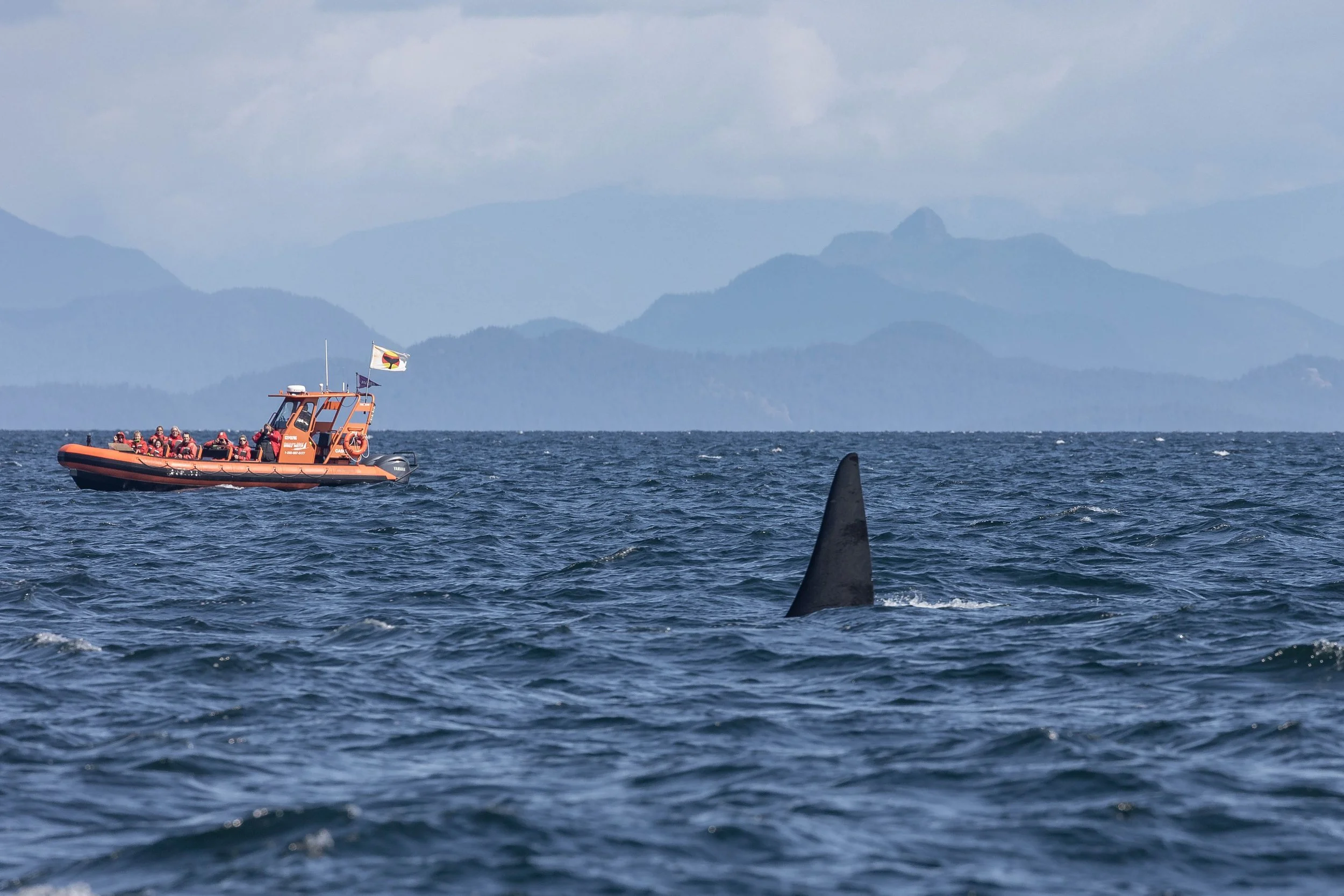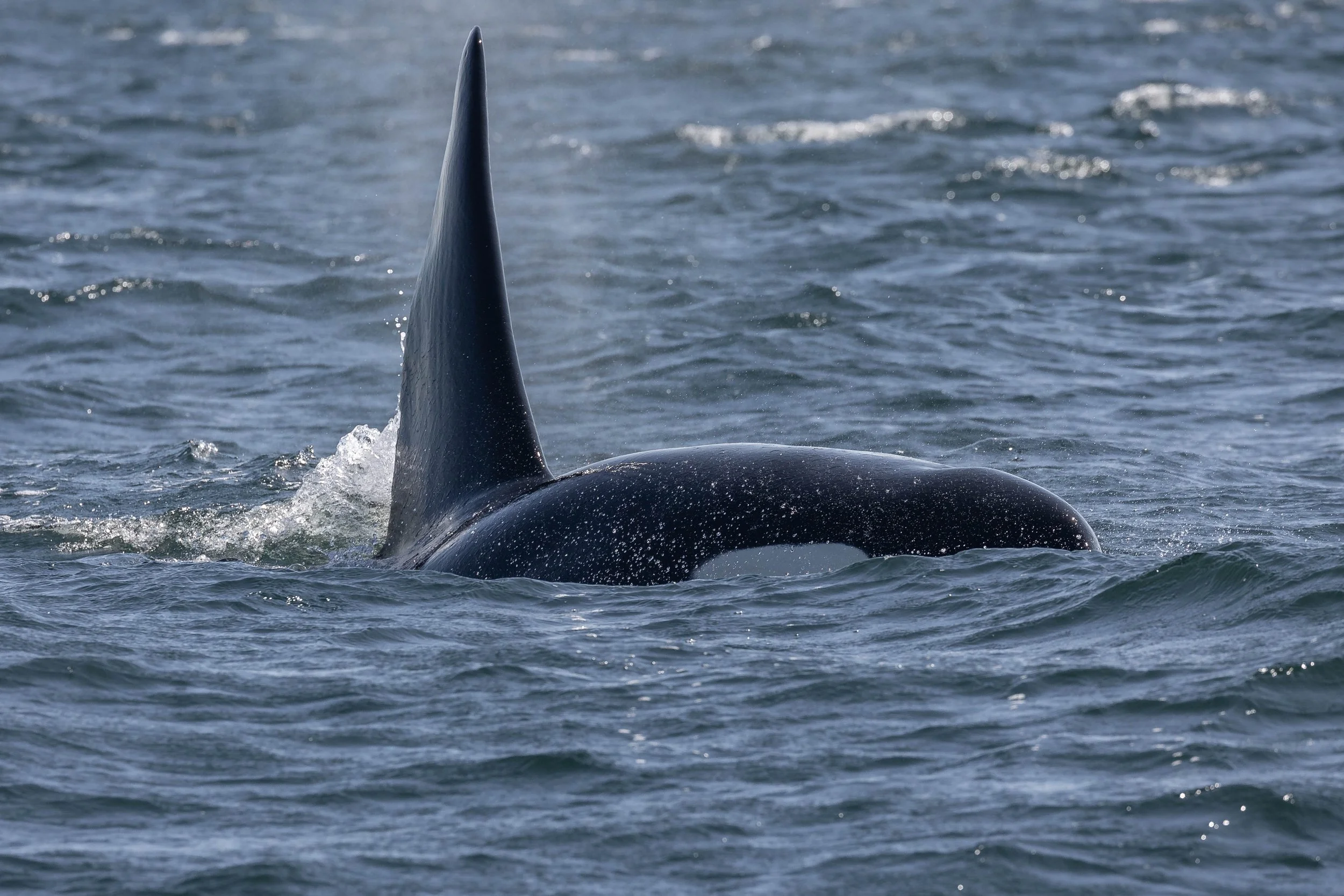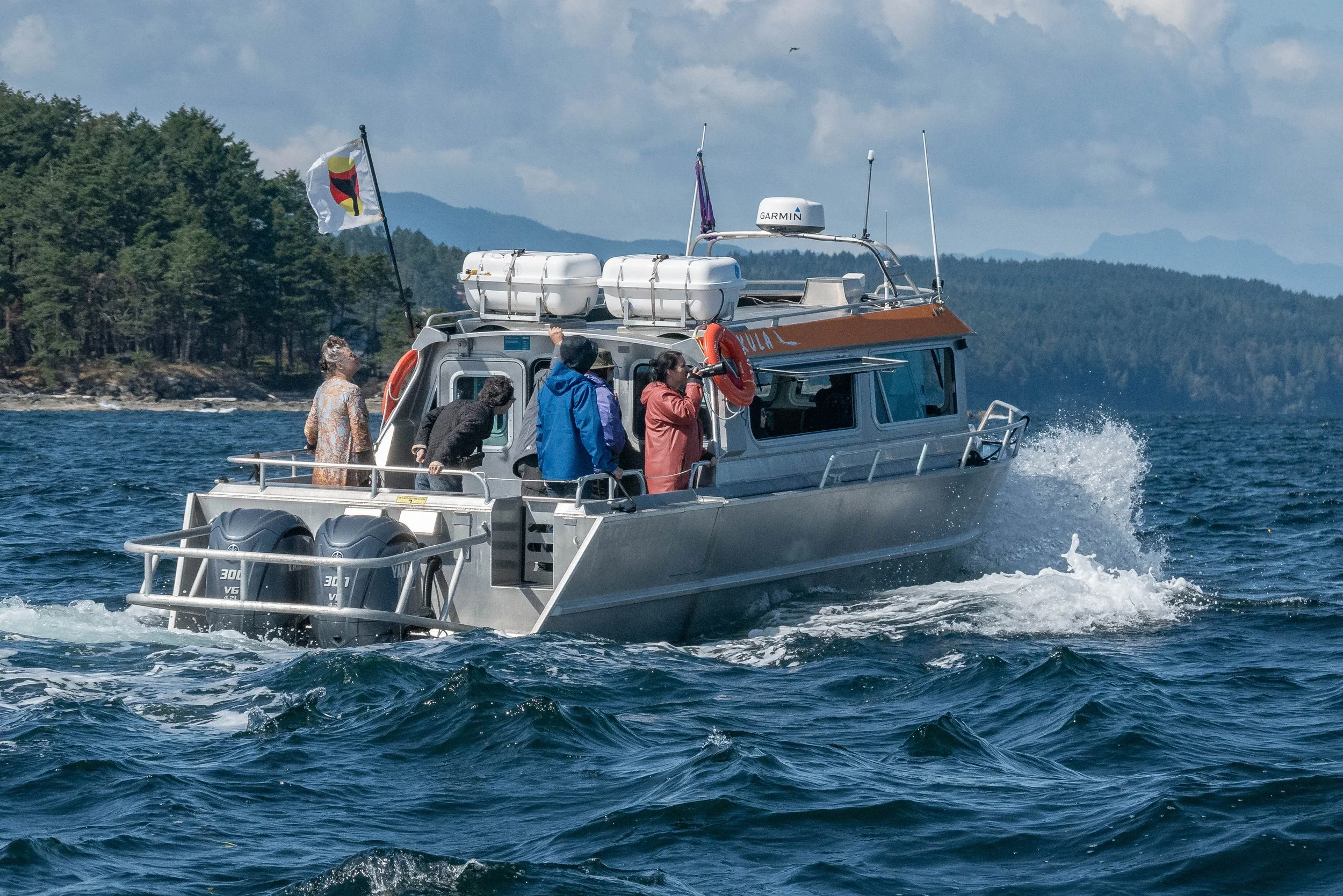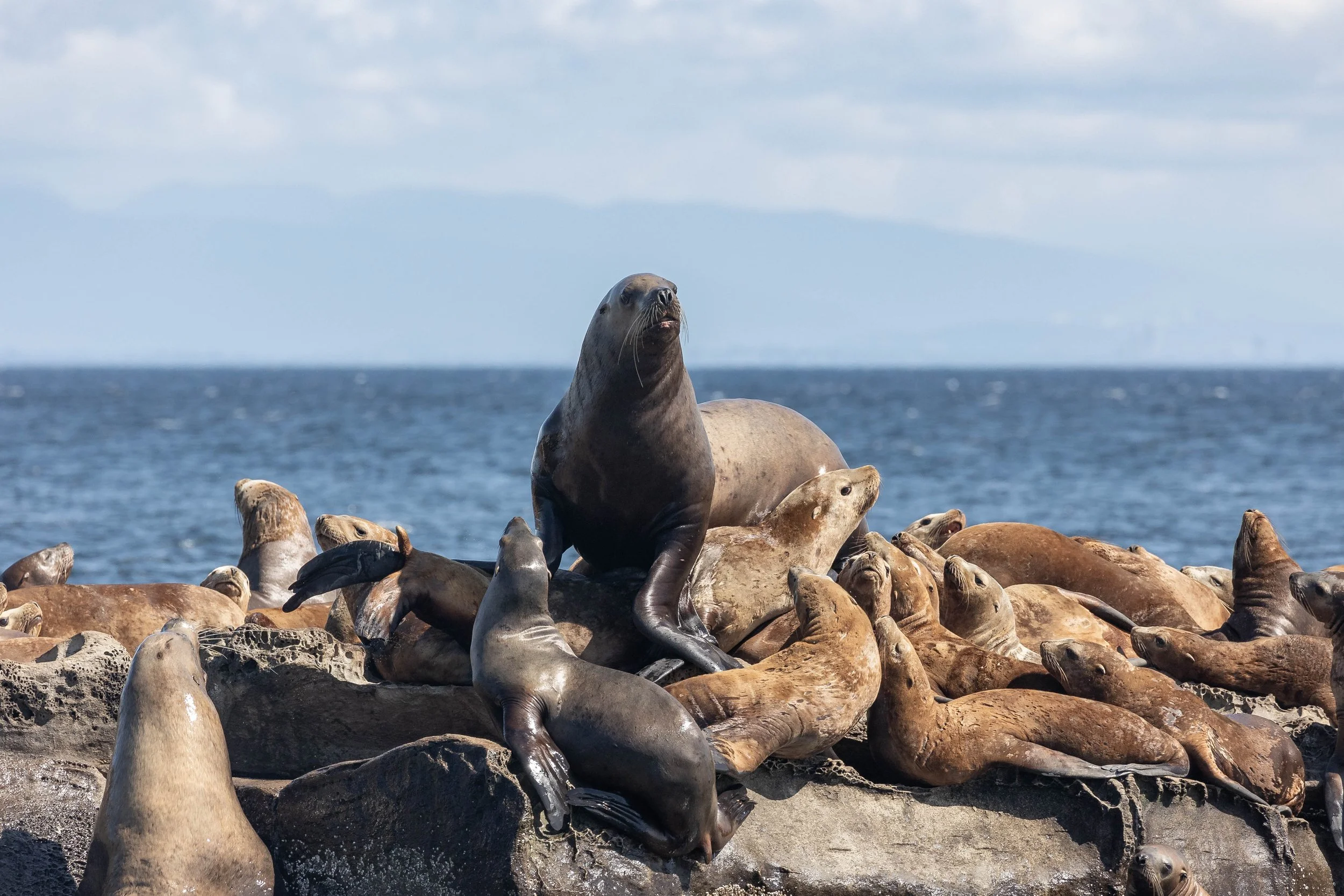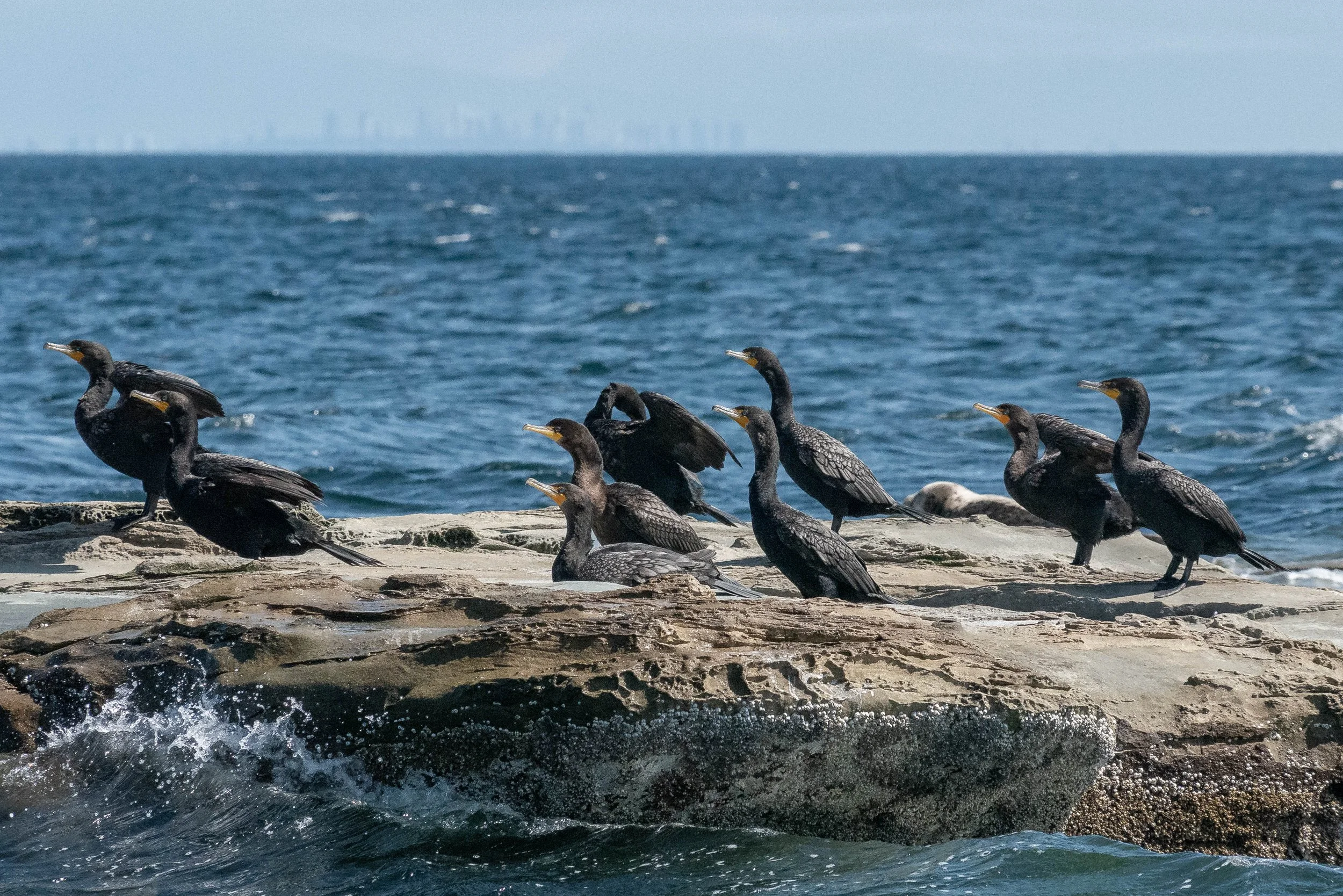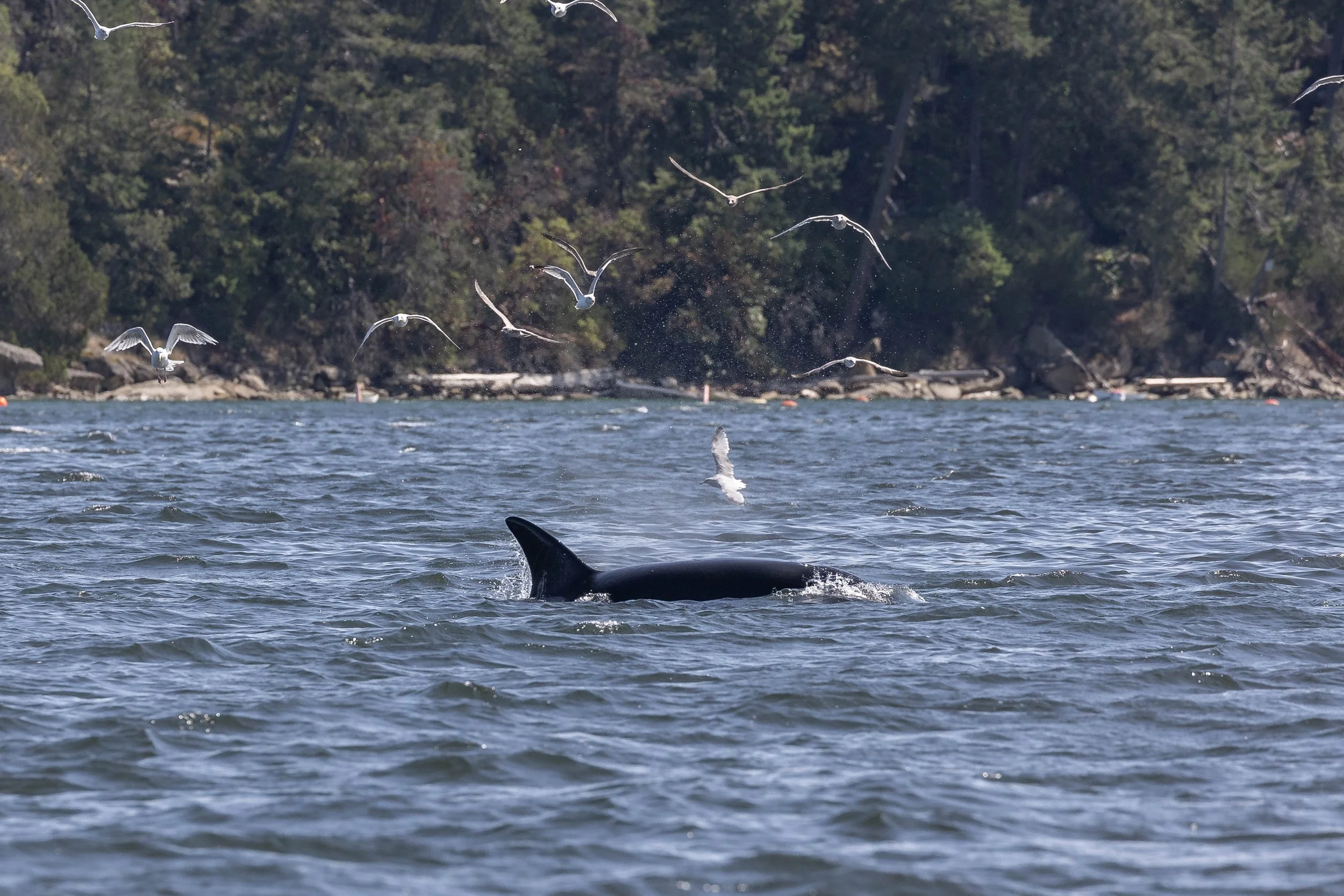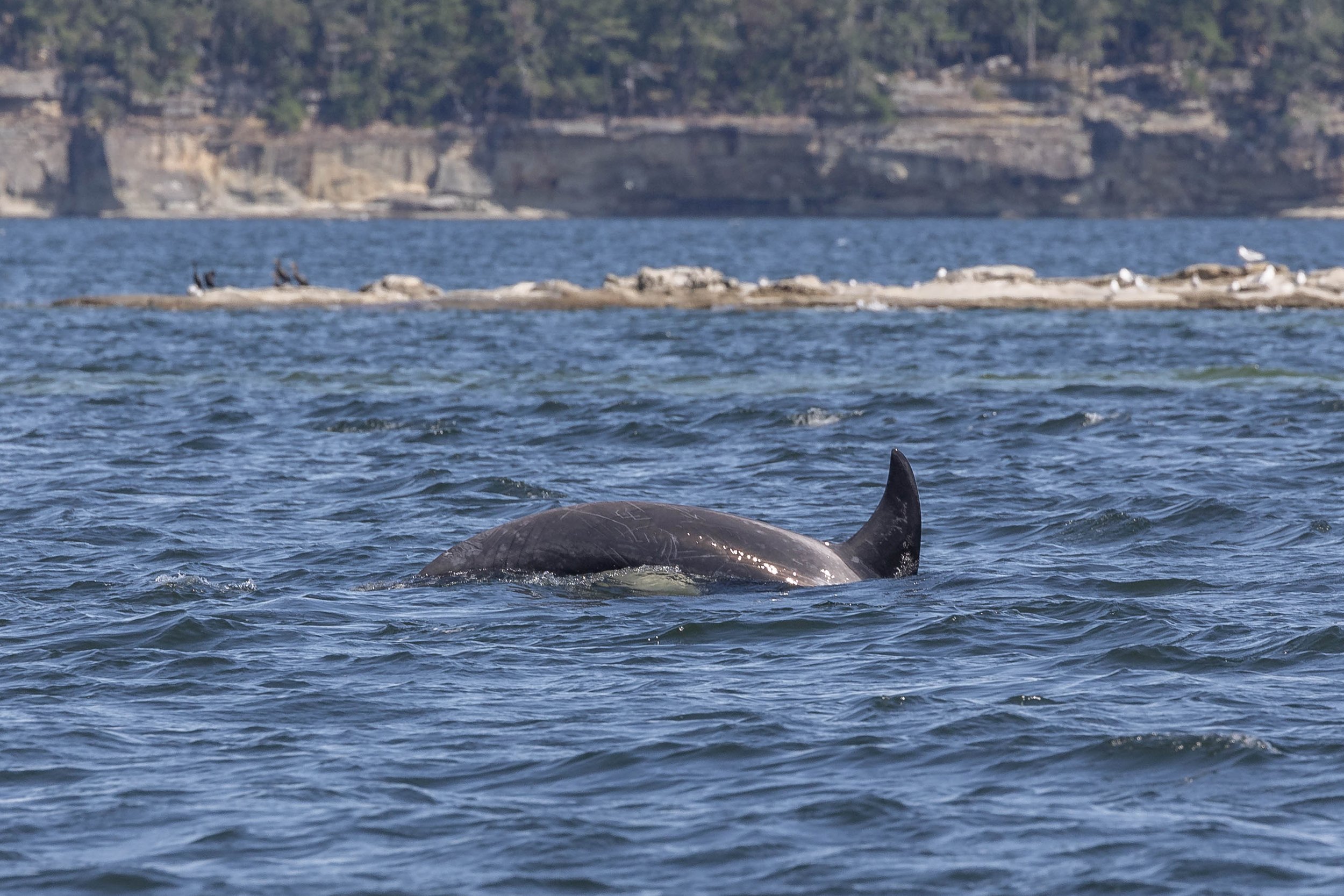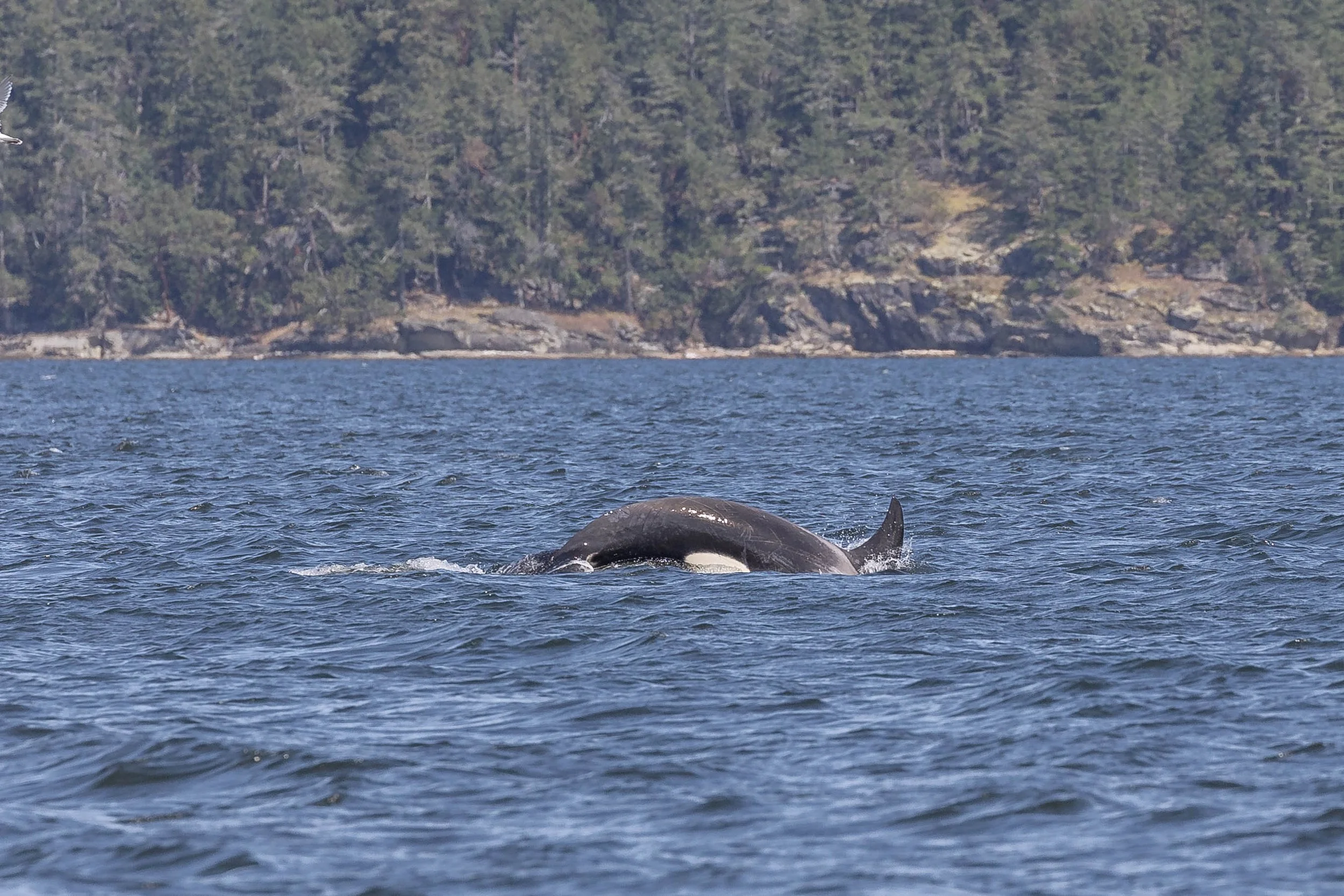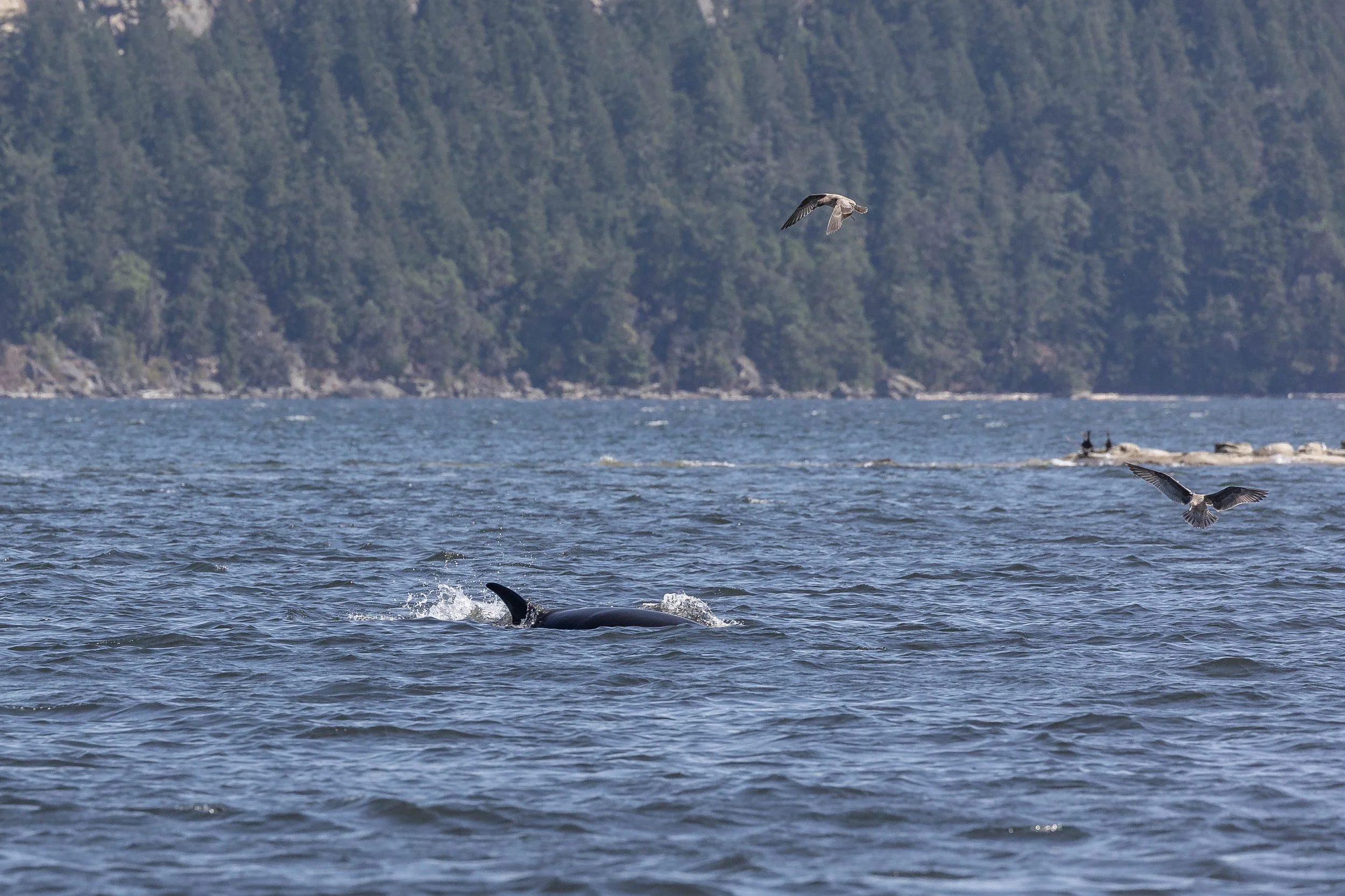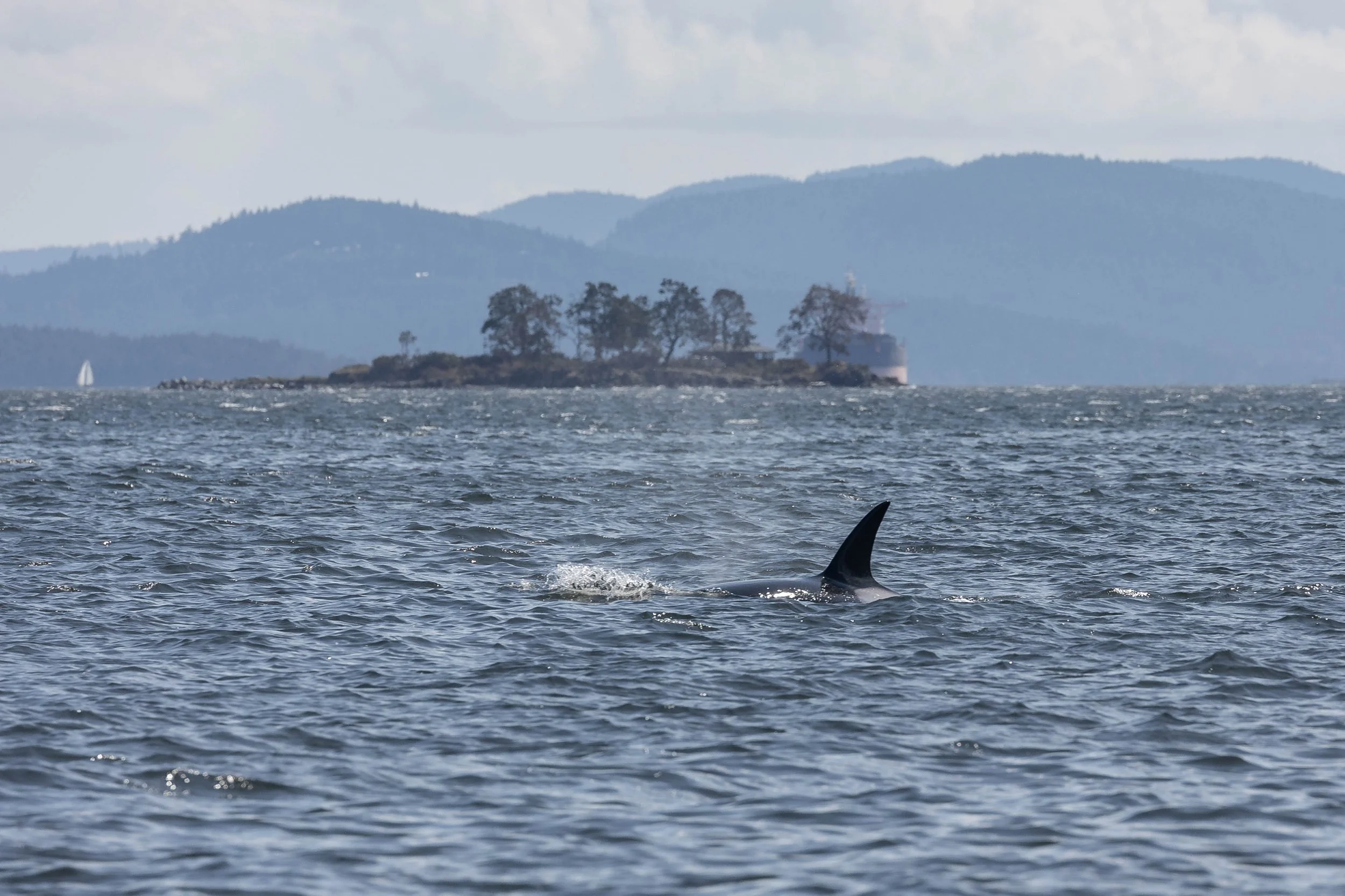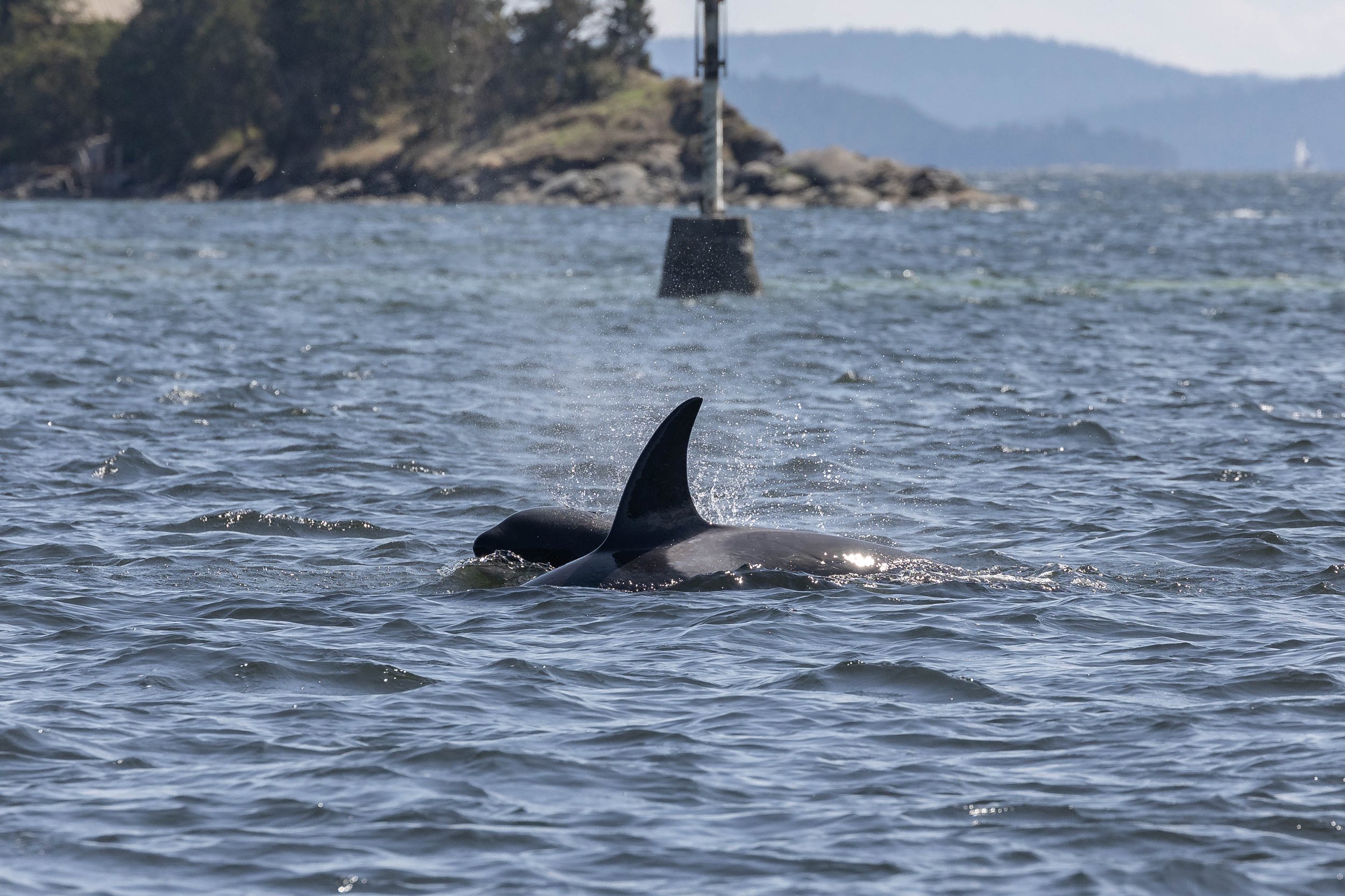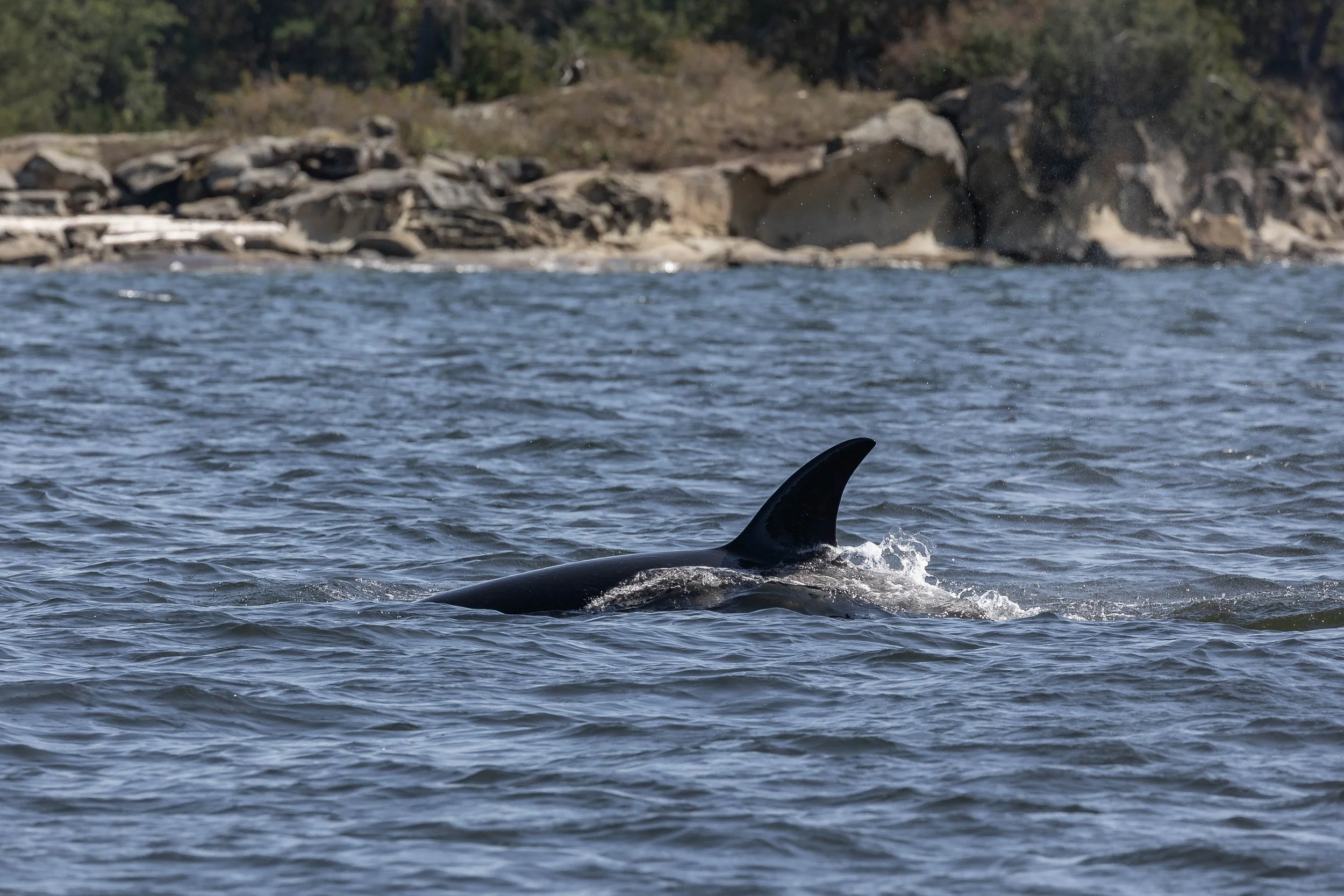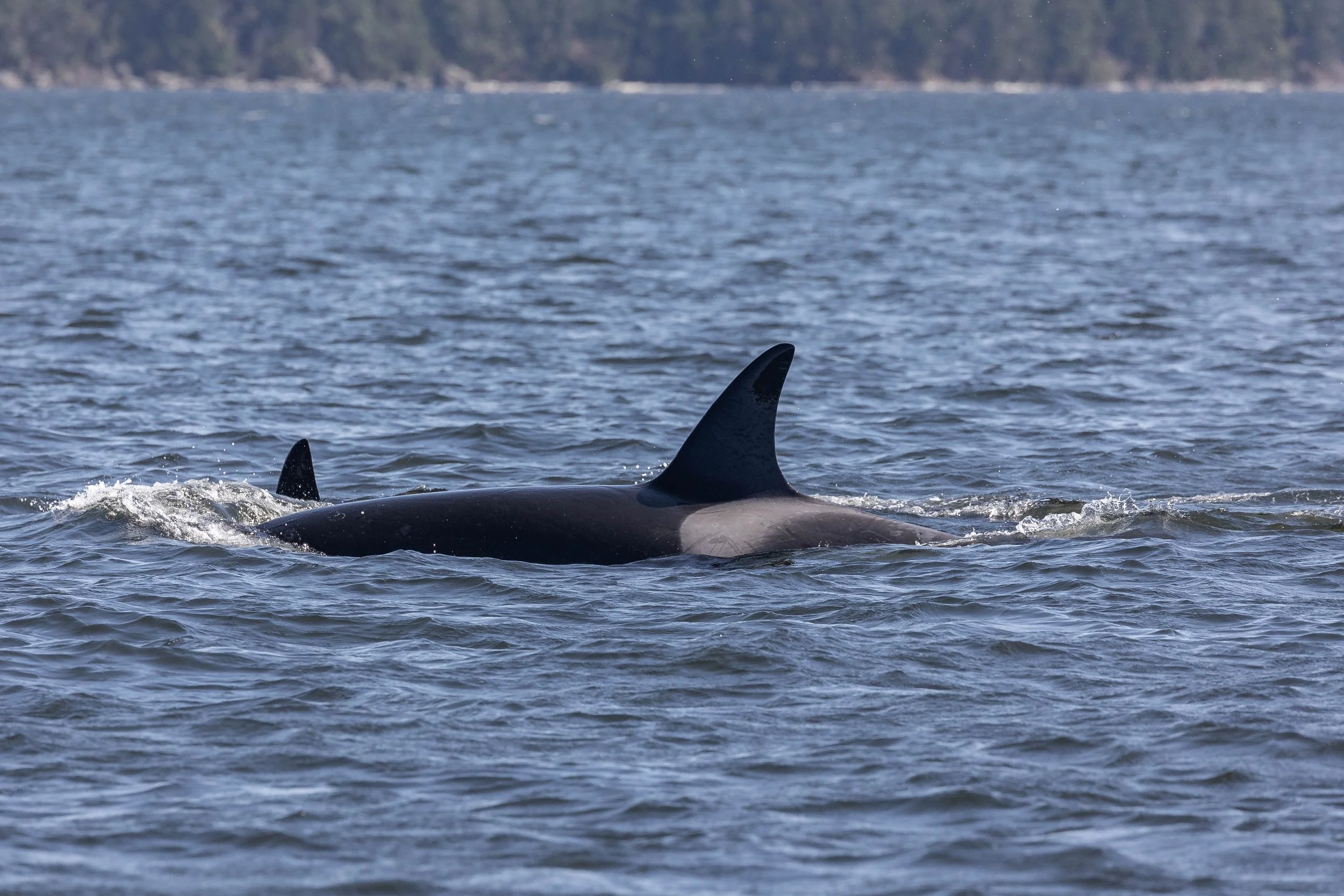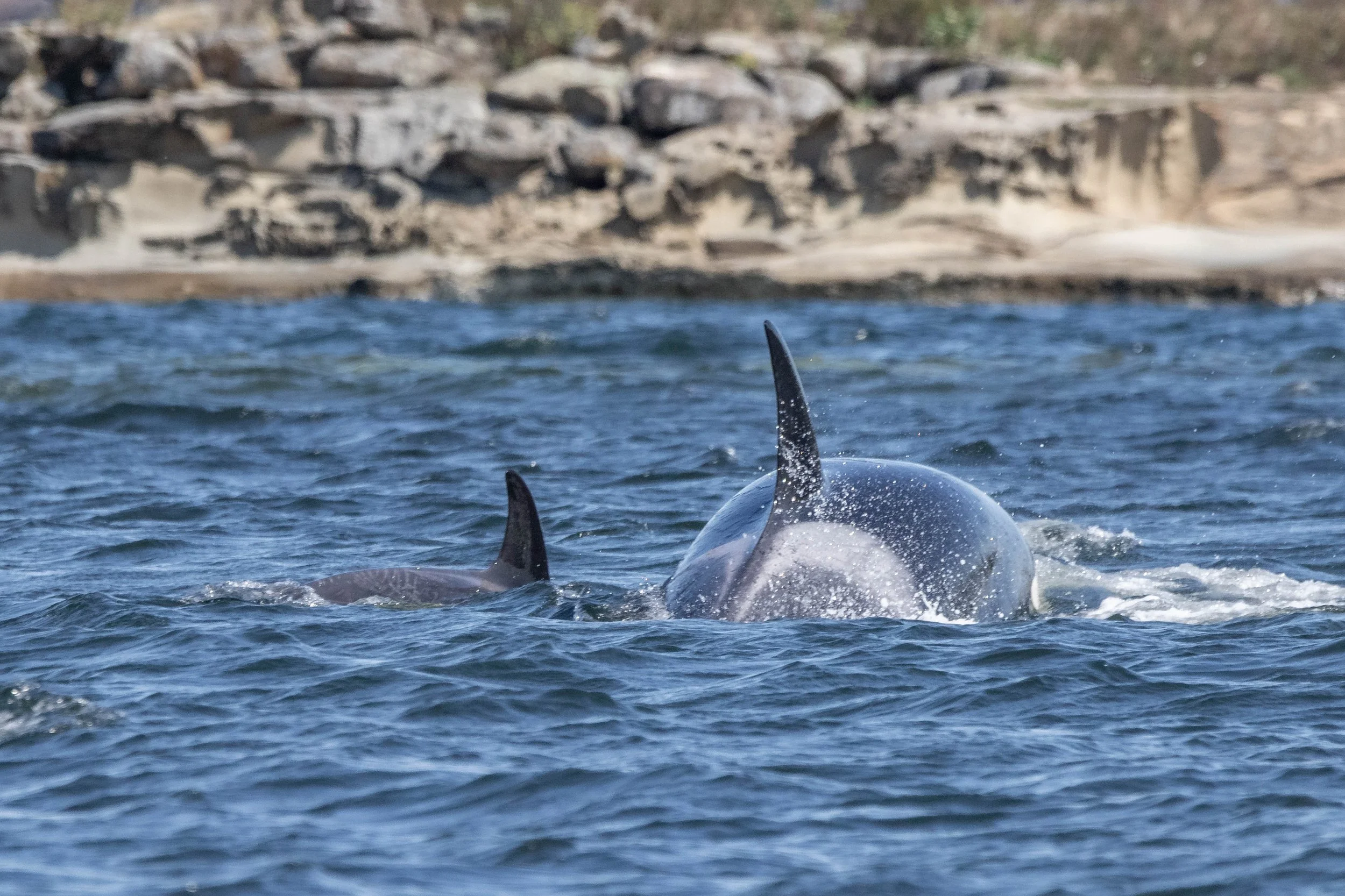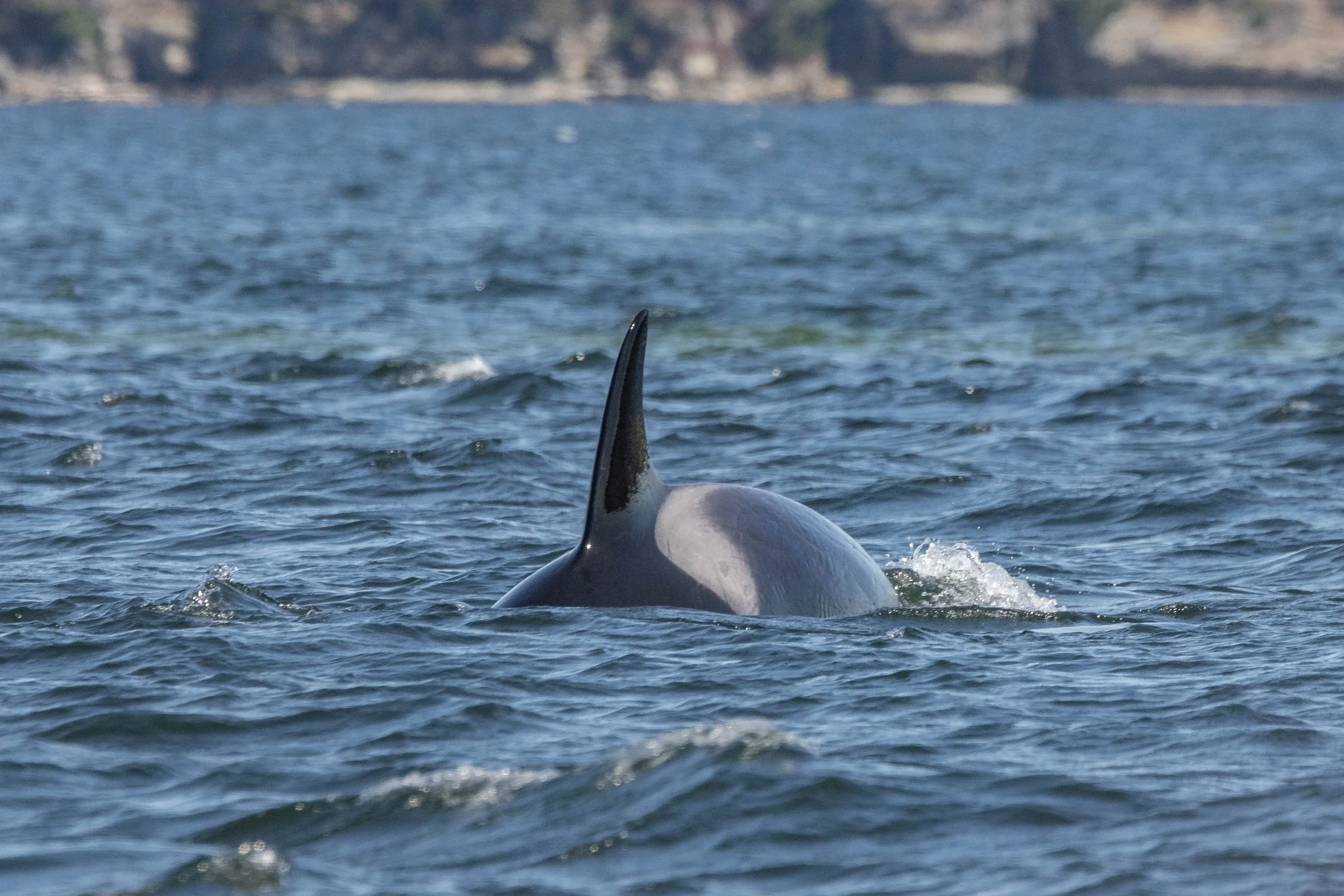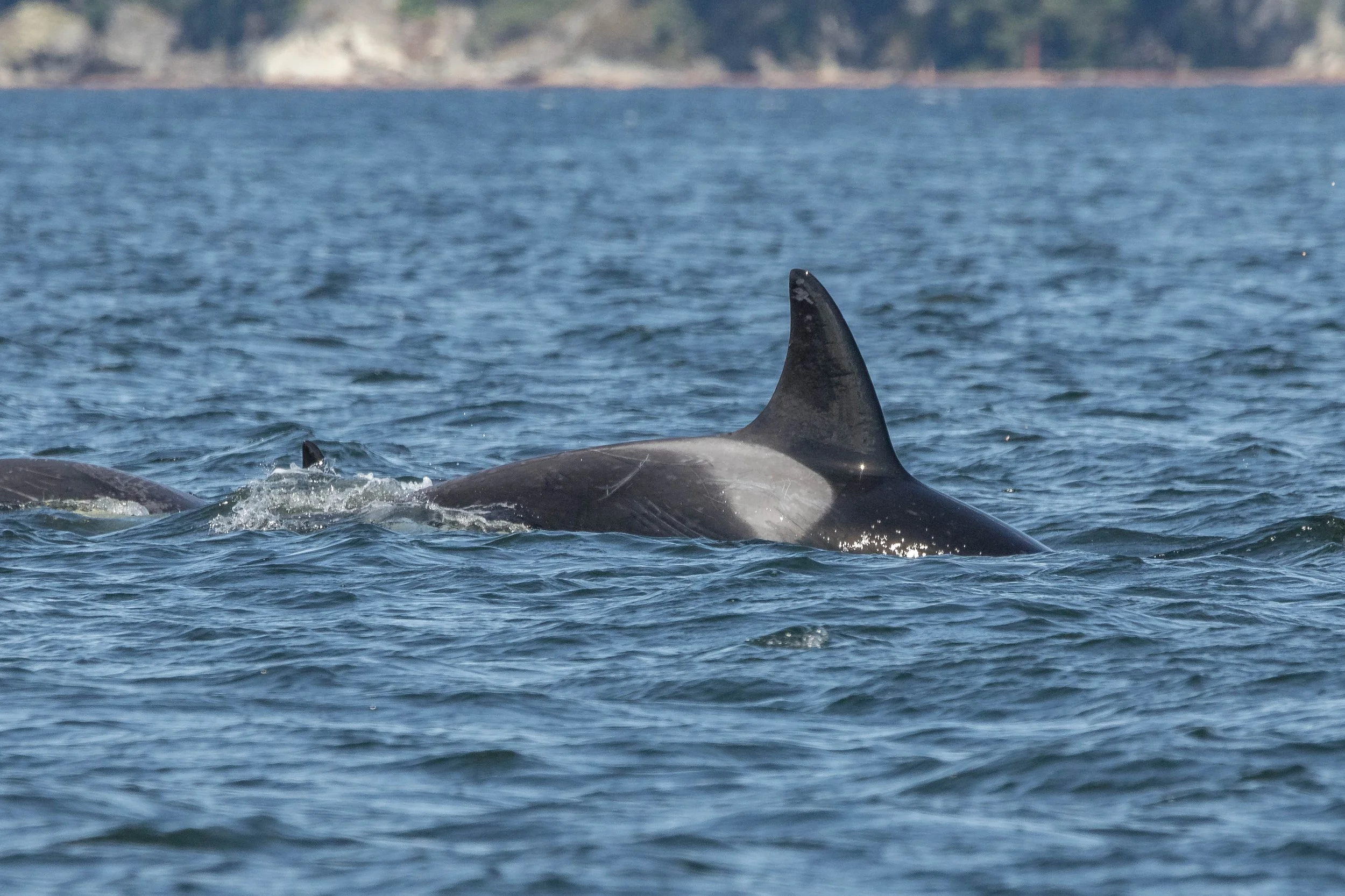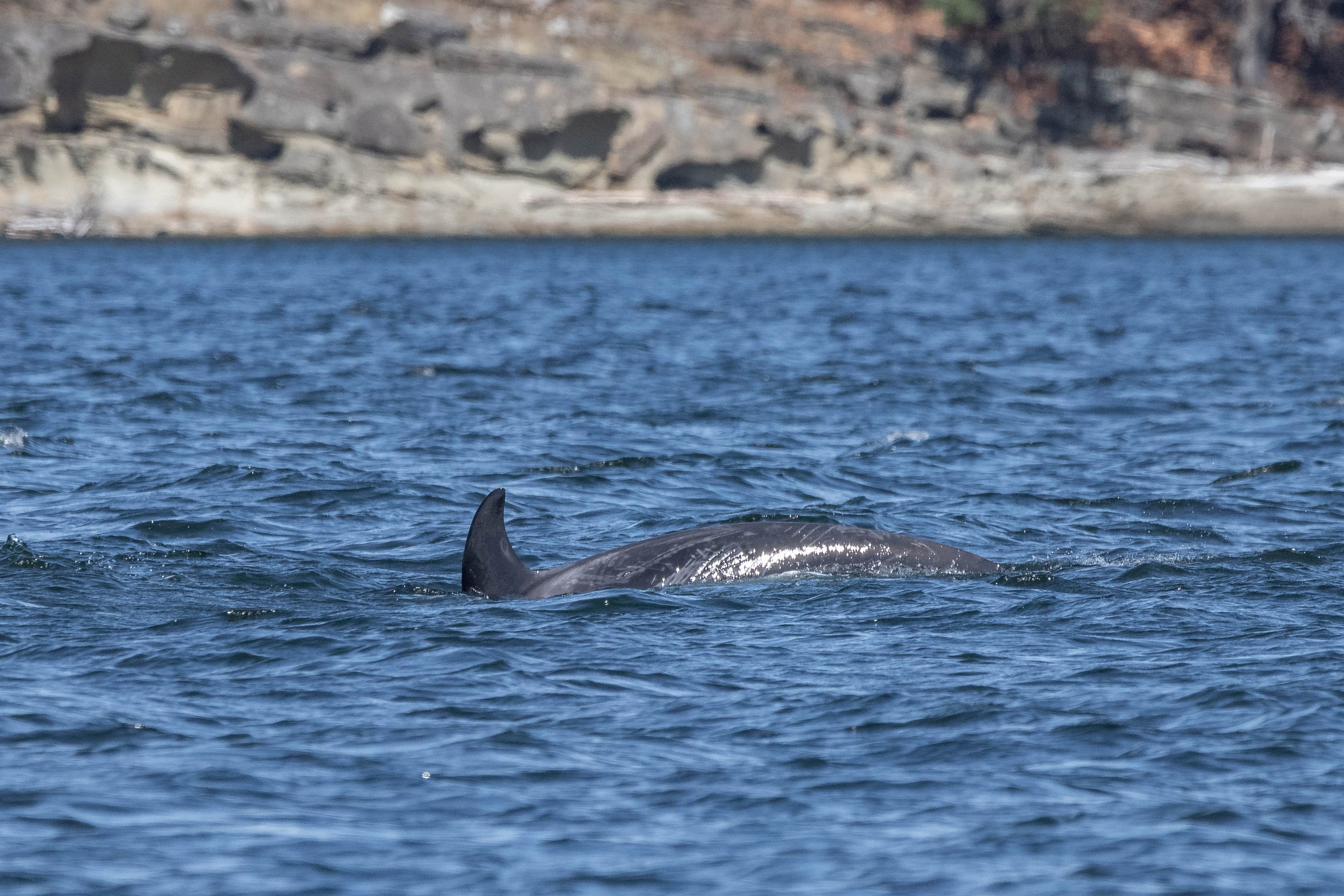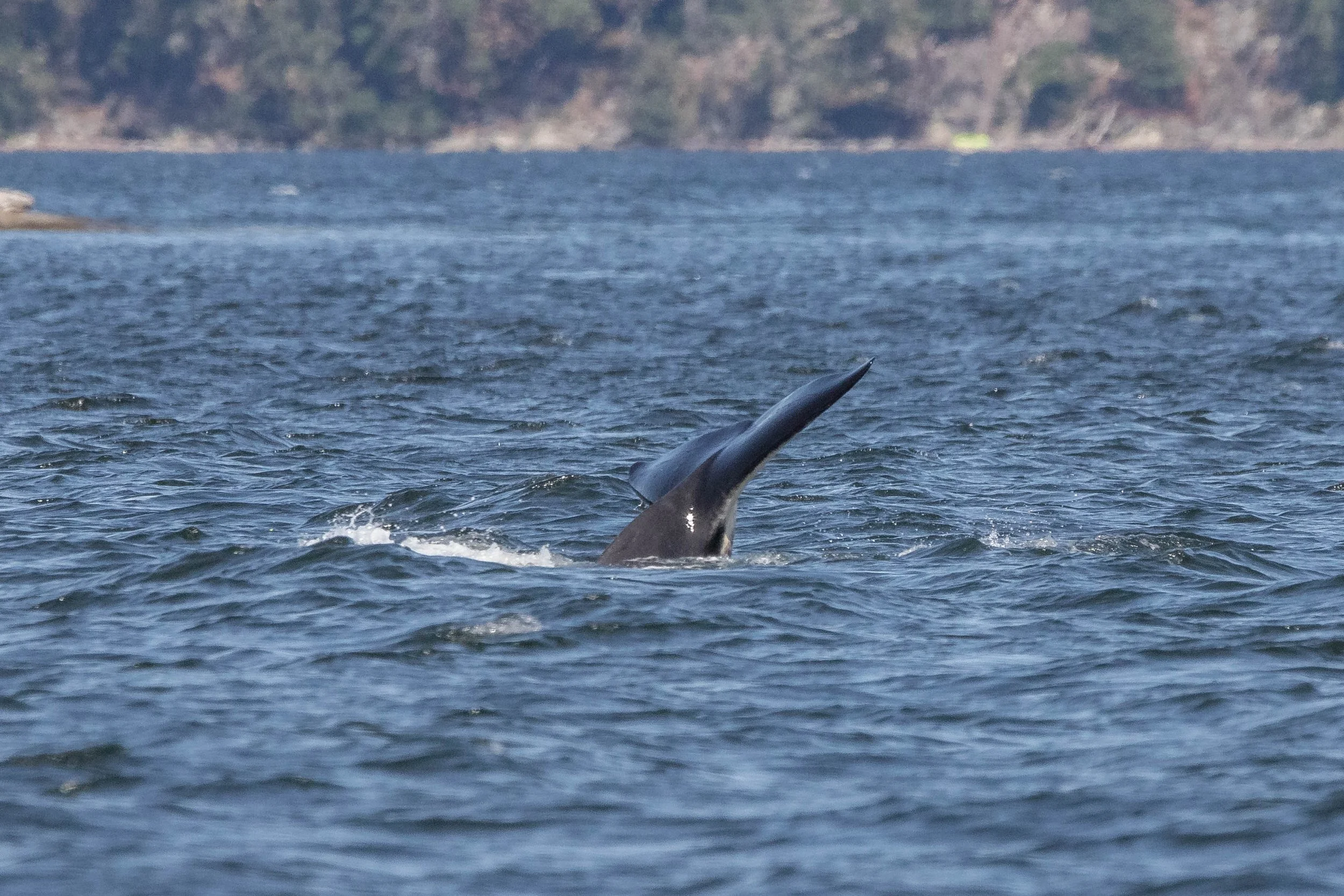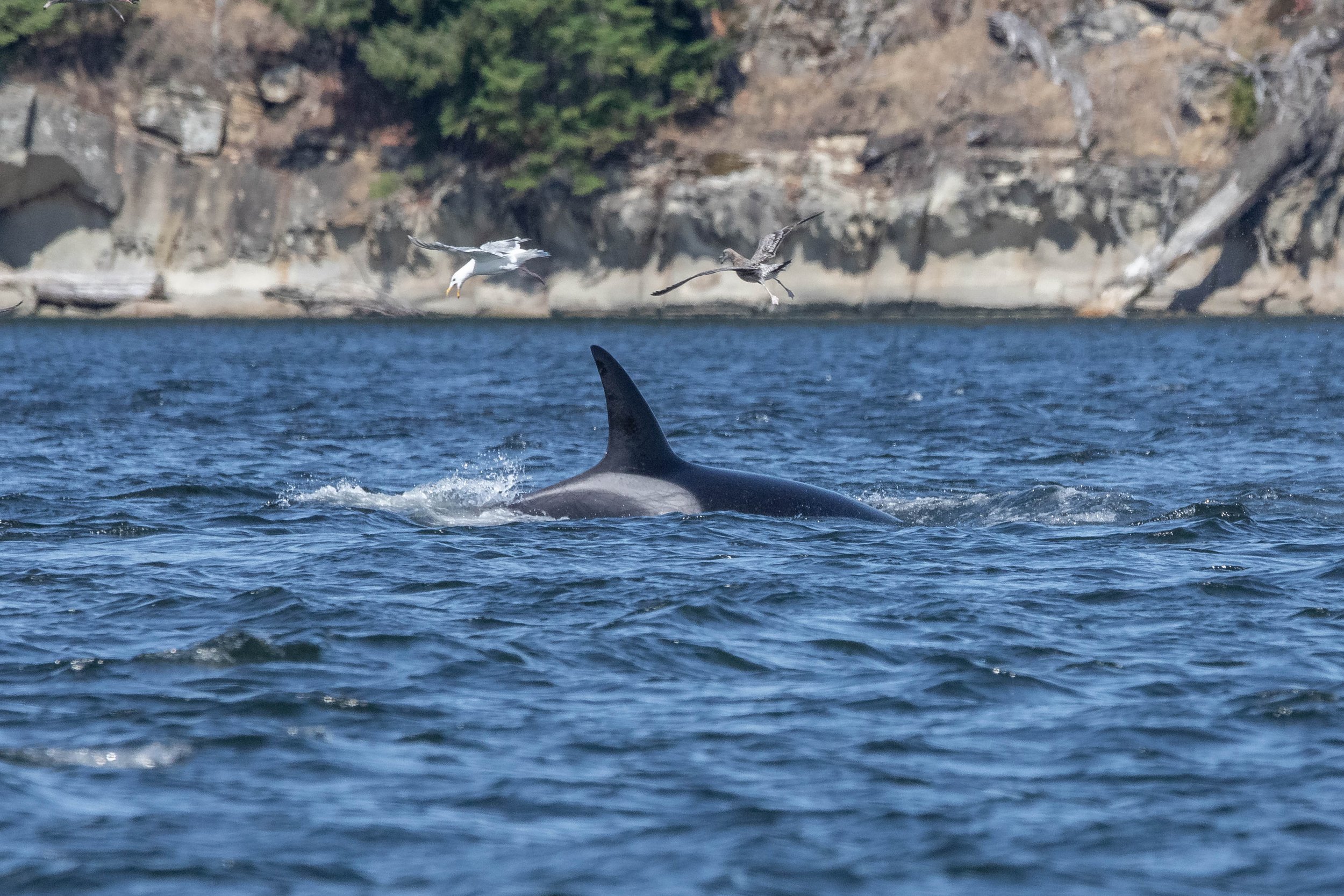August 27, 2024, 10:30 AM - Orca hunting in Ruxton Passage!
We had some wind today, which means waves! We began our search in the Strait of Georgia this morning, we could not move at the speeds we usually cruise at due to the chop. This was not a bad thing today as we had a lone Orca on the move and had we been clipping along at 35 knots we most likely would have missed his dorsal among the waves. This was T049A1 Noah a member of the T049As, we were lucky to have him as he is a fully grown male and his dorsal fin stands around 6 feet tall, making him even easier to spot even though he was on his own!
Another element on our side today was the chop itself. When we have motion in the ocean we get to see more of our Orcas as they will surface higher to breathe, giving us some excellent views of Noah’s saddle patch and eye patch. These unique features also help us get an identify the Orca as individuals. The easiest way for us to get an ID is to use the dorsal fin, this is especially true for the males as they tend to tower out of the water even from quite a distance. When we have a dorsal fin that does not have any distinct features (like Noah’s notch) that’s when we hope to get some photos of the saddle and eye patches! This makes it much easier to get a positive ID over solely going off of the shape of the fin itself.
Noah seemed like he was on a mission heading North, we can assume his family may have been up ahead as he has a tendency to travel away from them, but not too far! We left him to his travels and decided to take a break from the wind and tuck into the shelter of the Gulf Islands. We are glad we did, as we were coming through Ruxton Passage we could see an array of gulls diving down and picking something up from the surface of the water! Then all of a sudden a fin popped up between the feeding birds, it was the T075Bs.
T075B Pebbles ♀ (1995)
T075B2 Jasper ♀ (2015)
T075B3 Rubble (2017)
T075B4 (2021)
They were in the middle of a hunt. How exciting! We got to see some aggressive surfacing with some speed to it! Most of the hunt does occur under the surface, but we can assume that it was a successful one today as those gulls seemed to be eating well after the Orca did all the hard work. We are not sure what the prey was, but more often than not it is a harbour seal they found under the waves. The harbour seals make up the majority of our transients’ diet, but they will also dine on harbour porpoises, dolphins, sea lions and on occasion other whales.
We watched them have a little celebration after filling their tummies including a couple of tail slaps, but then we had to get moving back home. Along the way we also got to meet our Steller Sea Lions at the spot we call “Stinky Rocks”, these rocks get their name because our Stellers can be a little smelly. This is because their diet consists of fish, squid, octopus and crab giving them unpleasant breath. They also regurgitate and defecate on those rocks, and they pile together right on top of their messes! Maybe not the most polite and proper members of the Salish Sea, but always incredibly entertaining to watch!
We got some amazing photos today, thanks to the onboard Marine Naturalists Des Poier, Hayleigh Hilbert and Vanessa Vereschahen.
T049A1 Noah in the waves. Photo by Des Poier.
Guests onboard Cascadia watching T049A1 Noah. Photo by Des Poier.
A great look at T049A1 Noah. Photo by Des Poier.
T049A1 Noah showing his eye patch. Photo by Des Poier.
People onboard Kula watching Noah. Photo by Hayleigh Hilbert.
T049A1 Noah breaking through a wave. Photo by Hayleigh Hilbert.
Steller Sea Lion Cuddle Puddle at Stinky Rocks. Photo by Des Poier.
Steller Sea Lion modeling in the waves. Photo by Vanessa Vereschahen.
Fighting Steller Sea Lions. Photo by Vanessa Vereschahen.
Cormorants relaxing at Stinky Rock. Photo by Hayleigh Hilbert.
T075B Pebbles surfacing. Photo by Des Poier.
T075B1 Jasper during the hunt. Photo by Des Poier.
T075B1 Jasper doing a little dive. Photo by Des Poier.
T075B Pebbles going for a dive. Photo by Des Poier.
T075B3 Rubble breaking through a wave. Photo by Des Poier.
T075B3 Rubble during the hunt. Photo by Des Poier.
T075B Pebbles. Photo by Des Poier.
T075B2 Jasper exhaling. Photo by Des Poier.
T075B3 Rubble surfacing beside another family member. Photo by Des Poier.
T075B3 Rubble in a wave. Photo by Des Poier.
T075B2 Jasper showing a full eye patch. Photo by Des Poier.
T075B2 Jasper's paddle patch. Photo by Des Poier.
T075B Pebbles showing a bit of her eye patch. Photo by Des Poier.
A Spy hop from one of the T075Bs during the hunting. Photo by Hayleigh Hilbert.
Chunky orca from the back. Photo by Vanessa Vereschahen.
T075B2 Jasper diving during the hunt. Photo by Vanessa Vereschahen.
T075B2 Jasper with T075B4 just behind her. Photo by Vanessa Vereschahen.
T075B4 showing all the scarring on its back. Photo by Vanessa Vereschahen.
A tail slap during the hunt. Photo by Vanessa Vereschahen.
T075B Pebbles showing her saddle patch. Photo by Vanessa Vereschahen.
T075B Pebbles with T075B4 just behind her. Photo by Vanessa Vereschahen.
A gull in flight. Photo by Vanessa Vereschahen.


